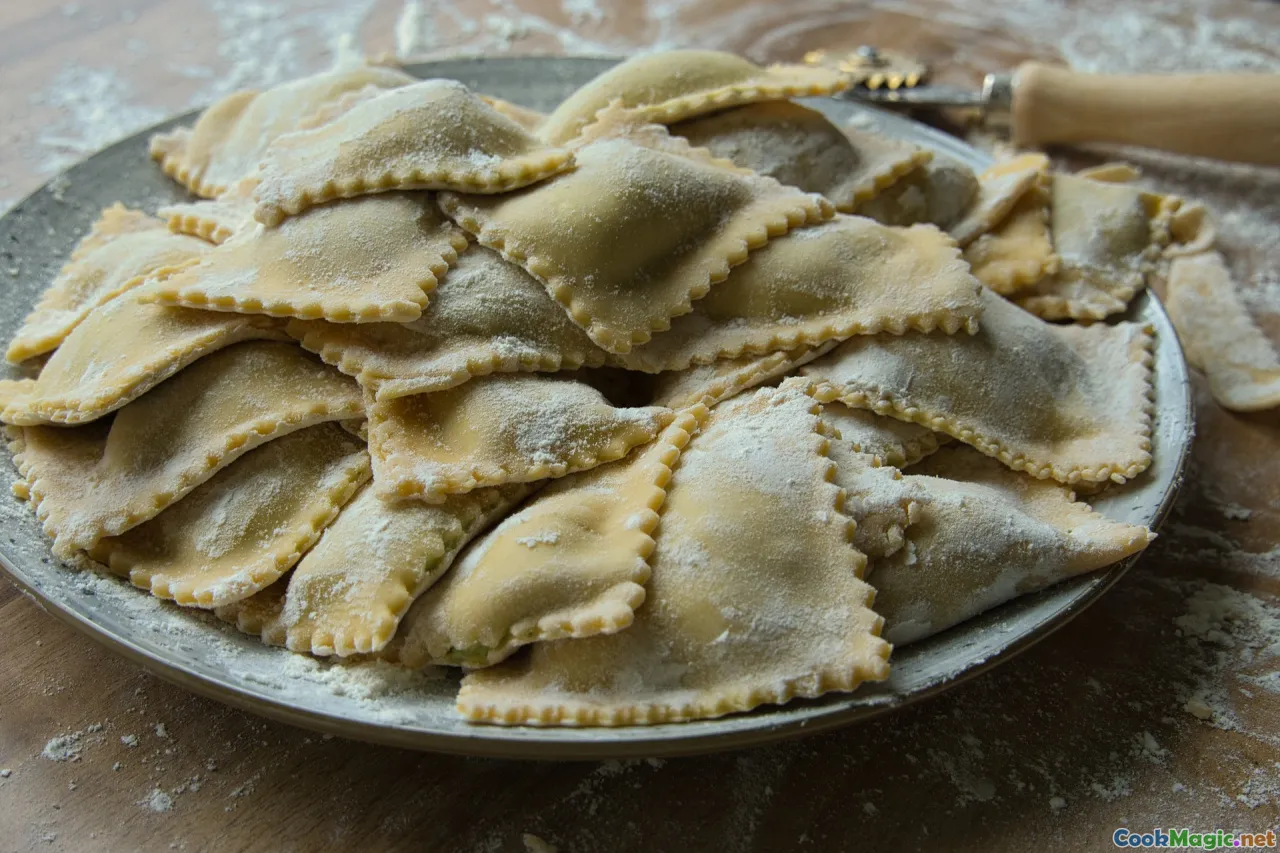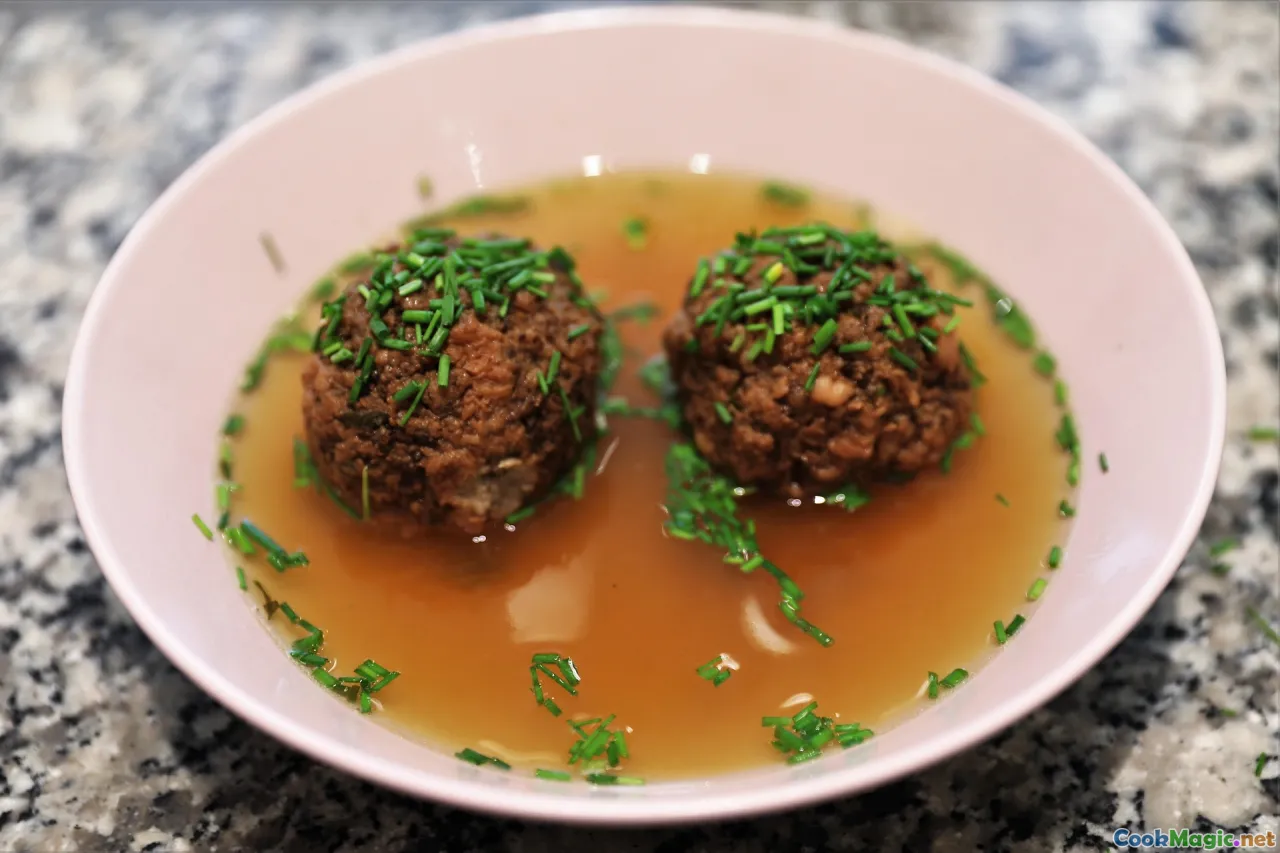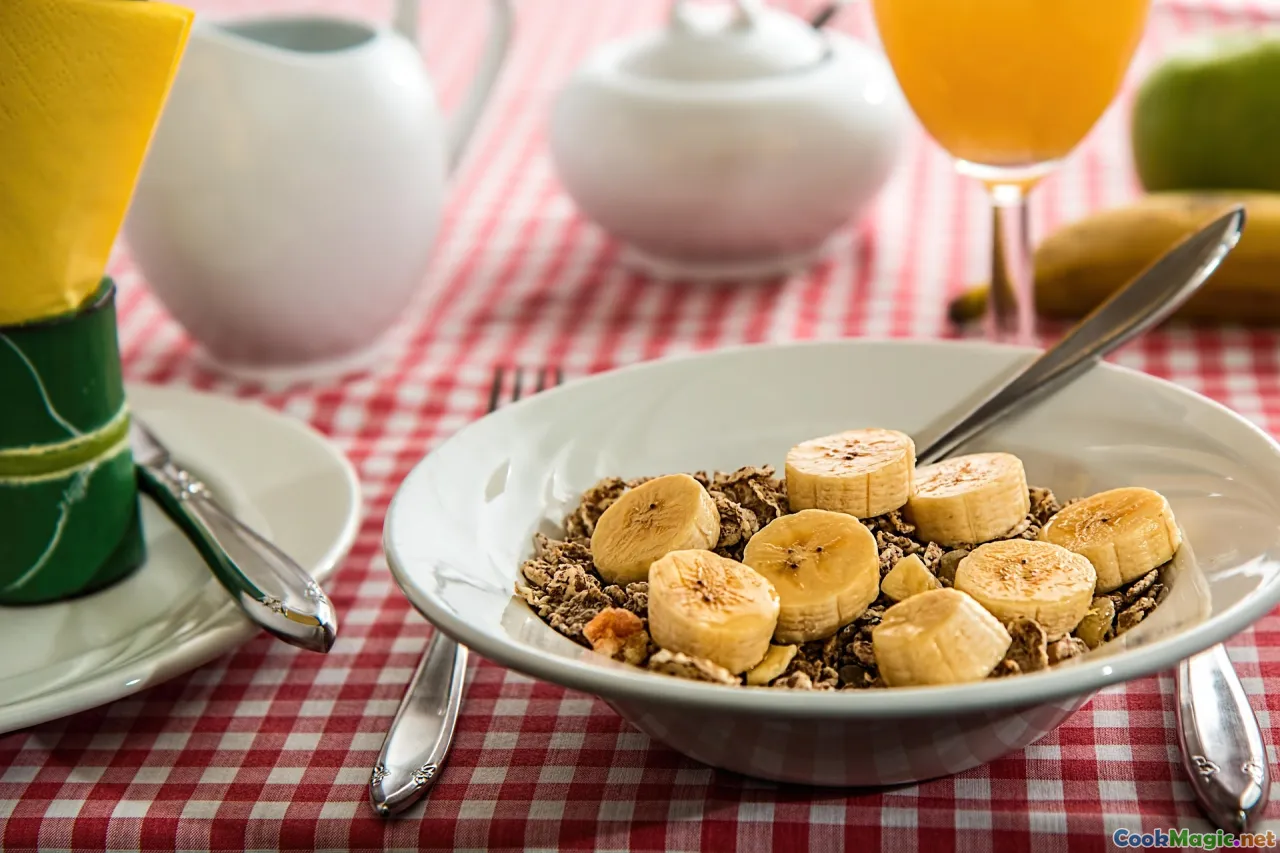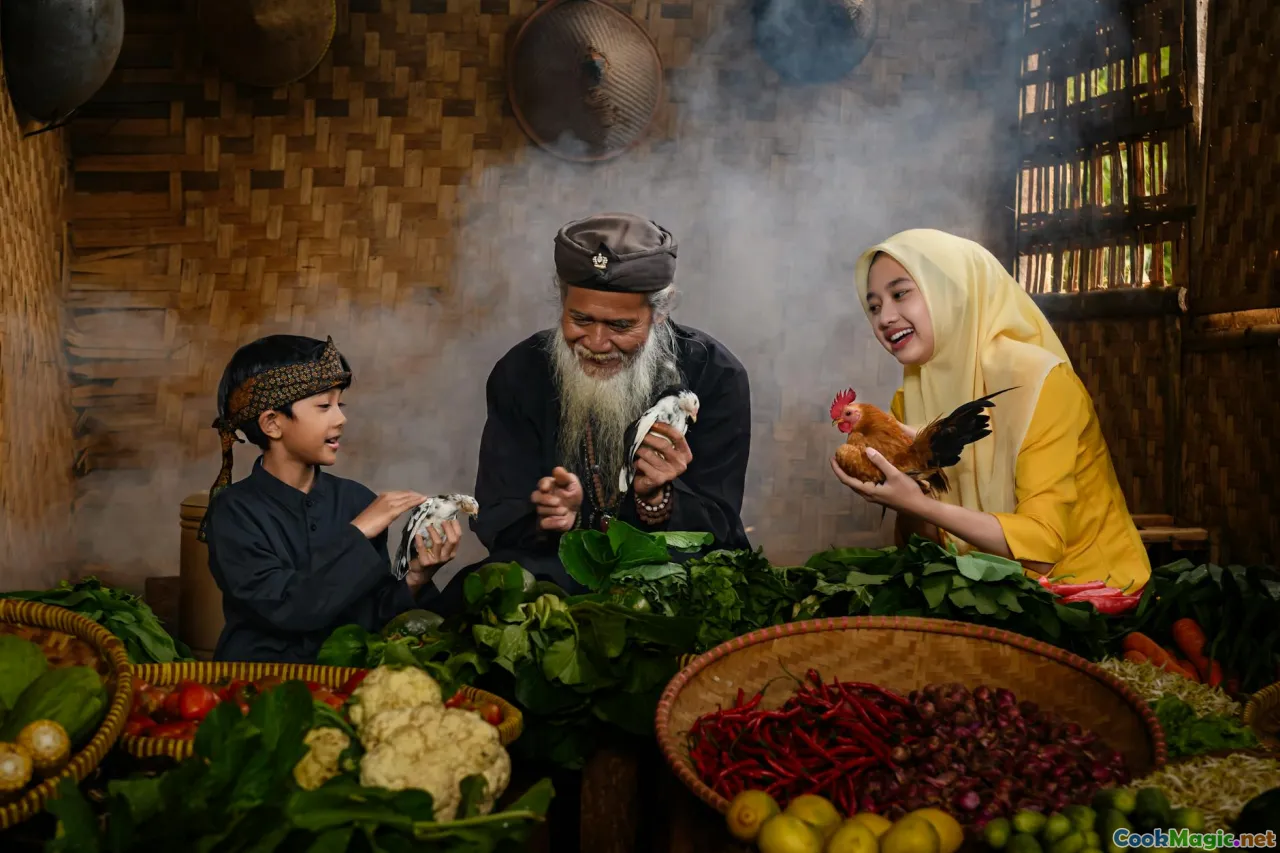Chuchvara Dumplings From Dough to Delectable
12 min read Discover the art of making authentic Chuchvara dumplings, from dough to delectable bite, showcasing Uzbek culinary traditions. September 24, 2025 18:05
Chuchvara Dumplings: From Dough to Delectable
Few dishes evoke a sense of warmth, tradition, and communal joy quite like chuchvara — those small, tender Uzbek dumplings packed with savory goodness and served at family tables and bustling bazaars alike. To truly appreciate chuchvara is to engage with a centuries-old culinary ritual, a testament to Uzbekistan’s rich tapestry of history, culture, and heart.
Imagine the aroma of freshly rolled dough mingling with the scent of simmering meat, the soft purr of boiling water, and the anticipation of savoring each delicate bite. It’s not merely food; it’s an experience — one that carries with it the whispers of caravans crossing the Silk Road, the laughter of family gatherings, and the artistry of generations of cooks honoring their traditions.
In this guide, I will take you through the journey of making authentic Uzbek chuchvara — from selecting the best ingredients to mastering the dough, crafting the filling, shaping the dumplings, and finally serving them in traditional style. Along the way, I’ll share personal insights, regional variations, and tips so you can recreate a piece of Uzbek culture in your own kitchen.
The Heart of Uzbek Cuisine: Chuchvara's Cultural Significance

Chuchvara isn’t just a dish; it's a symbol of Uzbekistan’s rich culinary heritage. These tiny dumplings are a staple during festivities, family gatherings, and even in everyday meals. They embody the Uzbek values of hospitality and shared joy — each dumpling crafted with care, meant to be eaten communally from big steaming bowls.
Historically, chuchvara has connected nomadic tribes and settled communities alike, adapting to various regional ingredients and tastes while maintaining its core identity. It’s served in countless forms — sometimes with a rich, tangy yogurt sauce or a splash of bright, vinegar-infused broth. Visiting a local tandoor baking shop or bustling bazaar in Samarkand, you’ll inevitably encounter chuchvara being prepared with skilled hands, whispering stories of centuries past.
Selecting Ingredients: The Foundation of Flavor

Authentic chuchvara begins with careful ingredient selection. The dough requires simple yet high-quality components: fine white flour, cold water, a pinch of salt, and sometimes a dash of oil. The key is in the texture — it must be elastic enough to roll thinly but sturdy enough to hold the filling.
The filling is where the heart of chuchvara truly lies. Traditionally, a mixture of finely minced lamb or beef, combined with onions, garlic, and a sprinkle of Uzbek spices like cumin, coriander, and black pepper. Some regions prefer pork or poultry, reflecting local customs. The meat should be fresh, ideally from a trusted butcher who sources pasture-raised animals — the quality of meat dramatically influences the final taste.
Personal anecdote: I once tasted chuchvara made with subtly spiced lamb in Bukhara, the aroma alone bringing tears of nostalgia. The balance between the sweetish flavor of onions and the earthy spices elevated these humble dumplings into a regal treat.
Crafting the Perfect Dough: A Ritual of Patience

Making the dough is a sensory dance. In Uzbekistan, many households adopt a rhythmic kneading process — pressing, folding, and rolling until the dough achieves a silky smoothness. Traditionally, women use a large wooden board and a rolling pin called a pachok, with a practiced hand that knows just how thin to make the dough — translucent enough to see your hand underneath.
A crucial tip: let the dough rest covered with a damp cloth for at least 30 minutes to relax the gluten, resulting in pliable, easy-to-cut sheets. When rolling out, be gentle yet consistent, aiming for a thickness of about 2-3 millimeters.
Assembling and Shaping Chuchvara

Filling and shaping chuchvara are acts imbued with love and focus. Cut the rested dough into small, square pieces — about 3x3 centimeters. Place a small teaspoon of meat filling in the center of each square.
The art here is to create a dumpling that is sealed tightly to prevent filling escape during cooking. Fold the square into a triangle, pinching edges firmly, then bring the corners together and pinch to seal in the round shape. Some cooks prefer a simple pinched edge, while others make intricate pleats for aesthetics.
Personal insight: I find that dampening the edges of the dough slightly before folding helps ensure a firm seal and neat appearance.
Cooking Chuchvara: The Art of Gentle Boiling

The classic cooking method involves boiling water seasoned with a pinch of salt in a large, wide pot. Carefully drop the shaped dumplings in batches, stirring gently to prevent sticking. They are done when they float to the surface, typically within 5–7 minutes.
For an authentic flavor, many Uzbek families serve chuchvara in a clear broth made from meat bones, infused with herbs like dill, parsley, and coriander. The broth is rich but refreshingly aromatic — a perfect companion to the tender dumplings.
Sometimes, for a lighter snack, chuchvara are briefly steamed or fried after boiling — crispy on the outside, juicy inside.
Serving Traditions and Personal Touches

Serving chuchvara is as much a cultural ritual as the preparation itself. It’s customary to ladle them into deep, handmade bowls and generously pour over the flavorful broth. A dollop of sour cream or a splash of vinegar can augment their delicate taste.
Particularly beloved is the communal aspect — everyone dips their spoon into the same large bowl, sharing stories and laughter between bites. In some regions, chuchvara are served alongside freshly baked bread and a simple tomato-based salad, completing a wholesome, satisfying meal.
Personal insight: In Uzbekistan, I’ve seen entire families gather over steaming chuchvara, the air filled with the mingled aromas of meat, herbs, and warm bread — a sensory celebration that transcends words.
Variations and Personalization

While the classic recipe remains beloved, creative cooks in different Uzbek regions prepare unique variations. In Khorezm, a splash of pomegranate juice in the filling offers a tangy twist. In Tashkent, chuchvara might be served with a smoky tomato sauce infused with garlic and coriander.
Vegetarian adaptations are gaining popularity, substituting meat with mushrooms, squash, or mashed lentils, seasoned with the traditional spices. The essence of chuchvara — tiny, tender parcels bursting with flavor — allows endless personalization.
Tips for Perfecting Your Chuchvara
- Use high-quality flour: It makes the difference in elasticity and texture.
- Rest your dough: It ensures smoothness and easier handling.
- Seal tightly: Prevents filling leakage during boiling.
- Don’t overcrowd the pot: Gives each dumpling space to cook evenly.
- Taste the broth: Adding fresh herbs during serving elevates the experience.
Reflecting on the Experience: A Personal Journey

Every step of making chuchvara is a voyage into Uzbekistan’s soul. From selecting the perfect meat to meticulously shaping tiny parcels, each moment is imbued with reverence for tradition and a desire to connect — with ancestors, family, and a culture that treasures shared meals.
The sweet reward is not only in the tender, flavorful dumplings but in the memories created around that steaming bowl. It’s a reminder that food’s greatest power lies in bringing people together, across generations and borders — a tiny, perfect chuchvara embodying an entire world.
In recreating this recipe, you’re not just making a dish; you’re honoring a legacy of artistry, community, and flavor. So roll out your dough, gather your ingredients, and let each fold be a whisper of Uzbek history carried gently in your hands.
Here’s to celebrating your culinary adventure into the heart of Uzbek cuisine — one tiny chuchvara at a time.









